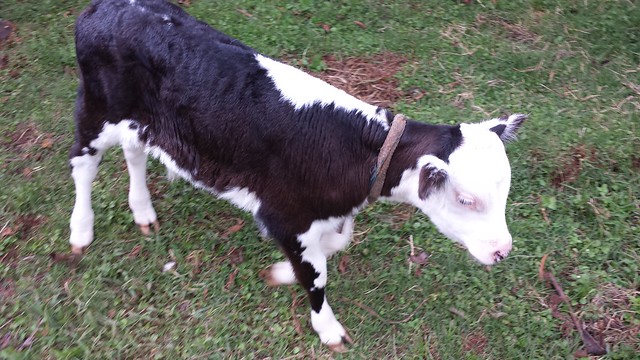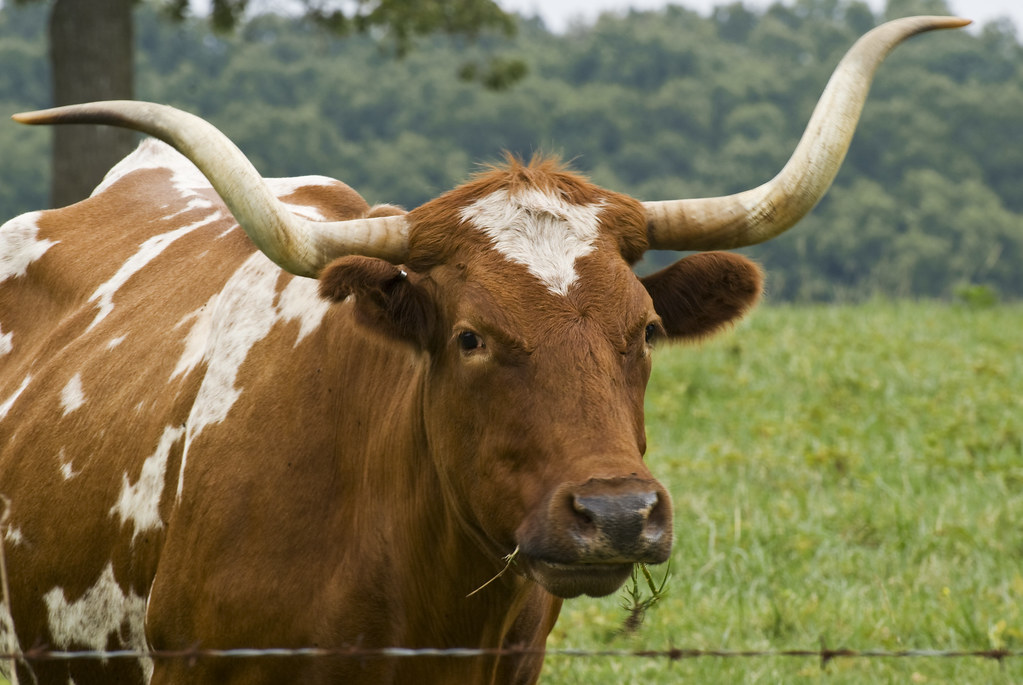
Good day,
I have a mixture of papers as usual this week, covering using AI to do lit review (on natural climate solutions), more on seaweed to reduce cattle emissions, one on fire management, and one bad study on return-to-office mandates.
Also, I have no idea how the cost and complexity of this new AI monitoring tool (SPARROW, https://blogs.microsoft.com/on-the-issues/2024/12/18/announcing-sparrow-a-breakthrough-ai-tool-to-measure-and-protect-earths-biodiversity-in-the-most-remote-places/) compares to simpler camera trap setups but I’m especially curious if the acoustic component might be able to detect amphibians or birds unlikely to be visible in a camera trap (thanks to Tara Schnaible for passing this on). If any of you are using camera traps and/or microphones for biomonitoring I'd love to hear your thoughts!
If you know someone who wants to sign up to receive these summaries, they can do so at http://bit.ly/sciencejon (no need to email me).
CLIMATE CHANGE AND AI METHODS:
Chang et al., 2024 uses specialized large language models to assess evidence for 11 co-impacts (positive or negative) of natural climate solutions (NCS). They extracted data from 257,266 studies (after screening 2.3 million)! Most (87%) focused on management, ~30% covered protection and/or restoration, but <2% mentioned cost or equity or Indigenous peoples or local communities. Fig 2 has a nice breakdown of NCS pathways, biome, co-impacts, etc., and Fig 4b maps countries by both evidence and mitigation potential. Paraguay and Republic of the Congo pop as highest carbon w/ lowest evidence (needing research), while the Americas and E/SE Asia have high evidence and high carbon (needing implementation). Fig 3 shows the volume of evidence for how 22 NCS pathways intersect with the 11 co-impacts (9 of which relate to human well-being). They argue that West and Central Africa deserves special research attention as evidence and human development index are relatively low while NCS potential and threatened species are high. One key caveat: evidence volume does not mean evidence quality. For example, there are many papers on sowing legumes in pasture to reduce enteric methane, but I'm not aware of any that are both accurate and precise enough for implementation (since putting them in the wrong places would lead to increased emissions). But this is still a great example of using AI to review a much larger body of evidence than would be possible manually.
CATTLE AND CLIMATE CHANGE:
Meo-Filho et al. 2024 is an important study (part of a special issue of papers around the sustainability of animal foods and plant alternatives, https://www.pnas.org/topic/561). There's been lots of research with hyperbolic claims about red algae reducing methane production in cattle (mostly in vitro, or tests in a petri dish). I believe this is the first paper to measure methane reductions not only 1) in vivo (a test of what happens in real animals) but 2) in the grazing phase of their life cycle. Most American cattle graze for very roughly 15 months before spending 3 months in a feedlot, and they emit more methane per day when grazing. Only 15% of total cattle production GHGs come from the feedlot phase, so even big reductions then can't touch cattle's high carbon footprint. But this paper found supplementing with the seaweed reduced GHGs relative to control animals by 38% over 90 days with no side effects! That is great news and this is work worth following up, BUT a few key caveats: 1) this was a study of only 24 animals, 2) the animals began at 15 months when they would typically go to a feedlot, to show how much this could really reduce the total carbon footprint of cattle (and if any side effects crop up eventually) it would need to be tested on calves from when they are weaned off of milk to when they go to slaughter, and 3) variations in cattle breed, the dominant type of grass they're eating, and climate could all affect the results. So it's very good news, but does not yet mean it's possible to produce a burger w/ 1/3 less carbon. Also, while the numbers are hotly contested, remember that the carbon footprint of beef is very roughly 10* that of pork or chicken (~50* the GHG of beans), so even if the reduction IS scalable, beef will still be a high carbon food.
Cowley et al. 2024 is a paper with very exiting results about reducing the carbon footprint of beef. They fed Australian Angus cows in a feedlot red seaweed (Asparagopsis) infused into vegetable oil, and added it to their diet at three concentrations of CHBr3 from the sewaweed, plus a control w/ no seaweed (5 cows for each of the four treatments). The medium and high doses reduced enteric methane (CH4) by 98% and 99%, with no significant reported side effects. Other studies have seen less impressive reductions in live cattle (e.g. George et al. 2024 found ~50% reduction), although in petri dishes 99% reductions have been achieved before. The discussion covers potential factors influencing the CH4 reduction, including dose, how much of the feedlot diet is grain vs grass, and cattle breed. Caveat - one high dose cow (20% of the sample) got acidosis and had to be removed, all groups had some health problems, and the medium and high doses did increase neutrophil and platelet count. Overall - at medium and high doses the methane was almost eliminated without affecting meat taste or safety, and without clear cattle health impacts. So the study is very promising, but needs to be replicated with larger groups and different contexts (including eventually a study using Asparagopsis during both the entire grazing phase and feedlot phase).
FIRE MANAGEMENT:
Lacey et al. 2024 highlights opportunities for prescribed fire and/or thinning (removing trees and/or brush) to proactively reduce risk for vulnerable communities and areas of high ecological value. Socially vulnerable communities are less likely to get this preventive fire management, but the authors find there are "win-win" opportunities for places high in: ecological value (specifically biodiversity, connectivity, and climate resilience), ecosystem services (carbon and drinking water), social vulnerability (see Table 1 for indicators), and the potential for wildfire mitigation to be effective (the last is based on fire hazard and vegetative cover). Fig 2c has their top priority areas, including big chunks in the Appalachians, Ozarks, and Rocky Mountains (esp. CO and ID), and Fig 4 shows in yellow where those overlap with the USFS top 10 firesheds. Fig 3 shows how much better their priority areas perform against several indicators than a focus solely in fire mitigation potential; as you'd expect optimizing for social vulnerability, ecosystem services, and ecological value results in sites that score a lot better on those indicators! That may seem obvious, but to reframe: in conservation we OFTEN don't include certain objectives in our planning but still expect to have great stories about all the co-benefits we got anyway. This paper is a great pitch for the value of inclusion; planning for what you care about up front will help you focus work on the places where you can have the most impact.
RETURN TO OFFICE MANDATES:
I already put this on LinkedIn but also wanted to flag here that I thought the recent Ding & Ma 2024 study from University of Pittsburgh (which has had a lot of media attention w/o scrutiny) was misleading. They found that 1) return to office mandates don't improve employee or company performance and 2) these mandates are used more to blame employees and "grab power" than to try and improve performance. This doesn't appear to be peer-reviewed research, which makes me more skeptical by default (it could still be right, but there's no screen for bad methods or misleading results). The paper's tone and methods make it look like they set out to prove some preconceived notions rather than exploring what's going on with an open mind, and the way they assert attribution and causation to some findings they report appear unsupported by the data. Their interpretations of their data are plausible, but even if you trust the data there are other valid interpretations which are also plausible.
The reason I posted this despite it seeming like a "bad" study is to flag the role of bias in reading science. I believe that if I was required to go to the office more often, it would negatively impact my performance and happiness. I can point to personal experience backing that up (I'm more willing to work longer hours when I don't have a commute or when I'm getting hungry but don't have food nearby to keep working). But in situations like this where I have an opinion and feel inclined to "right on!" what I read, that's exactly when I need to slow down and read carefully since I know I have bias leading me to accept certain results and interpretations as convincing. Also - read a news article about science and wondering if it's misleading? I generally first look for the press release from the host institution (to read a summary that the authors would have had a chance to review to reduce accidental misunderstanding, although they are still unreliable whether on accident or on purpose to hype it: https://business.pitt.edu/return-to-office-mandates-dont-improve-employee-or-company-performance/ ), then read the actual paper.
Don't assume the press release, or even my summary is accurate! Always check before you share or act on a research summary.
REFERENCES:
Chang, C. H., Erbaugh, J. T., Fajardo, P., Lu, L., Molnár, I., Papp, D., Robinson, B. E., Austin, K. G., Castro, M., Cheng, S. H., Cook-Patton, S., Ellis, P. W., Garg, T., Hochard, J. P., Kroeger, T., McDonald, R. I., Poor, E. E., Smart, L. S., Tilman, A. R., … Masuda, Y. J. (2024). Global evidence of human well-being and biodiversity impacts of natural climate solutions. Nature Sustainability. https://doi.org/10.1038/s41893-024-01454-z
Cowley, F. C., Kinley, R. D., Mackenzie, S. L., Fortes, M. R. S., Palmieri, C., Simanungkalit, G., Almeida, A. K., & Roque, B. M. (2024). Bioactive metabolites of Asparagopsis stabilized in canola oil completely suppress methane emissions in beef cattle fed a feedlot diet. Journal of Animal Science, 102(April). https://doi.org/10.1093/jas/skae109
Ding, Y., & Ma, M. (Shuai). (2024). Return-to-Office Mandates. In S&P Global Market Intelligence. https://doi.org/10.2139/ssrn.4675401
Lacey, L. M., Suraci, J. P., Littlefield, C. E., Busse, B. S., & Dickson, B. G. (2024). Informing proactive wildfire management that benefits vulnerable communities and ecological values. People and Nature, August, 1–15. https://doi.org/10.1002/pan3.10733
Meo-Filho, P., Ramirez-Agudelo, J. F., & Kebreab, E. (2024). Mitigating methane emissions in grazing beef cattle with a seaweed-based feed additive: Implications for climate-smart agriculture. Proceedings of the National Academy of Sciences, 121(50), 2–9. https://doi.org/10.1073/pnas.2410863121
Sincerely,
Jon
p.s. the photo is of a salt marsh at The Wetlands Institute in Stone Harbor, NJ







